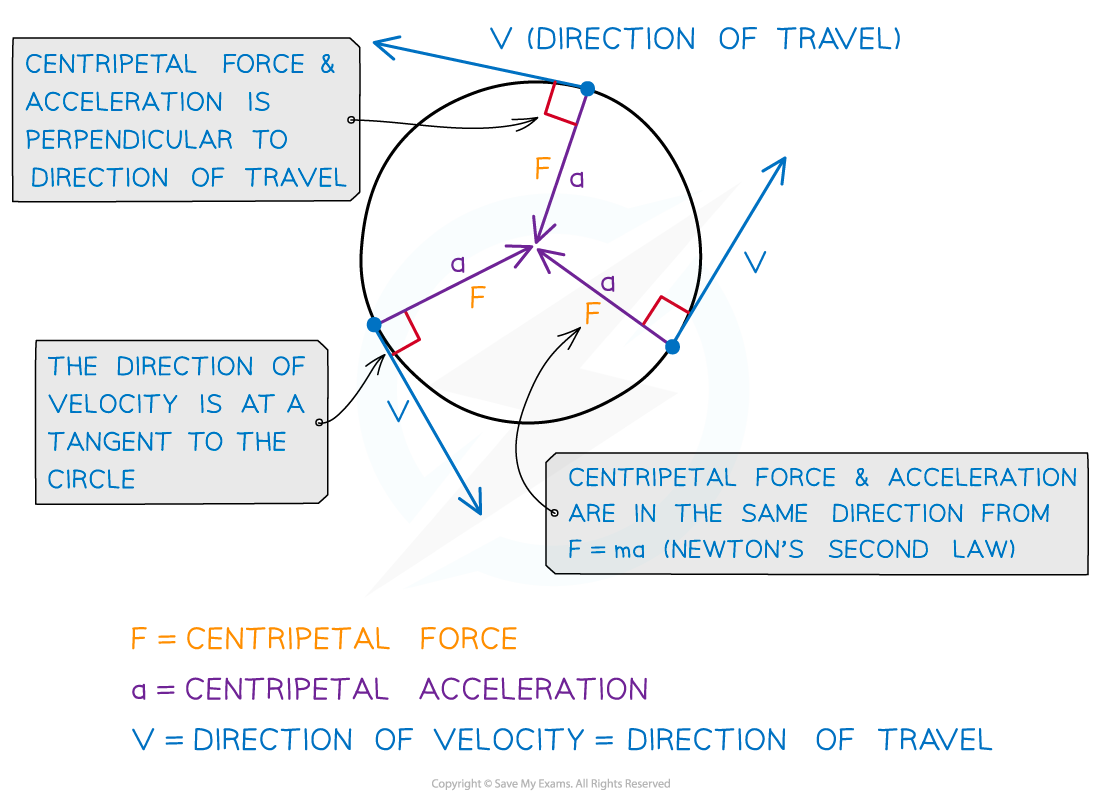Centripetal Acceleration (Cambridge (CIE) A Level Physics): Revision Note
Exam code: 9702
What causes centripetal acceleration?
Centripetal force
A centripetal force of constant magnitude always acts perpendicular to the direction of motion and causes centripetal acceleration
Centripetal force is defined as:
The resultant force towards the centre of the circle required to keep a body in uniform circular motion
Centripetal force is not a separate force of its own
It can be created by different forces depending on the situation, such as the examples in the table:
Examples of centripetal force
Situation | Centripetal Force |
|---|---|
A car travelling around a roundabout | Friction |
A ball attached to a rope moving in a circle | Tension |
The Earth orbiting the Sun | Gravitational attraction |
Centripetal force and centripetal acceleration both act:
in the same direction (towards the centre of the circle)
perpendicular to the direction of the linear speed
An object in uniform circular motion is constantly accelerating
This is because velocity and acceleration are both vector quantities
Therefore, as the object's direction constantly changes, this means its velocity constantly changes
Centripetal force and acceleration

Centripetal force and acceleration are always directed towards the centre of the circle
Examiner Tips and Tricks
The linear speed is sometimes referred to as the ‘tangential’ speed
A tangent is a straight line which touches a circle or curve at exactly one point
The key feature of a tangent to a circle is that it always acts perpendicular to its radius
You can find out more in the A Level Maths revision notes on Tangents
Relating centripetal acceleration & angular speed
An object travelling in uniform circular motion has centripetal acceleration, yet its angular speed (⍵) is constant
This is because speed is a scalar quantity, whilst velocity is a vector quantity
Therefore, angular speed is the magnitude (size) component of angular velocity
Key ideas to remember:
Angular speed (magnitude) stays constant, angular velocity (direction) is constantly changing
Angular speed does not change with radius, but linear speed does
The object’s centripetal acceleration is always directed toward the centre of the circle, and is perpendicular to the object’s velocity at any one time
Velocity and acceleration are both defined by a change in direction, not just a change in the magnitude
Examiner Tips and Tricks
We are used to the idea of acceleration meaning something is speeding up. So, it might sound counterintuitive to say an object travelling in a circle is accelerating, yet it also has constant speed. This is where the idea of scalars and vectors would be useful to revisit if you are not confident with this concept.

Unlock more, it's free!
Did this page help you?